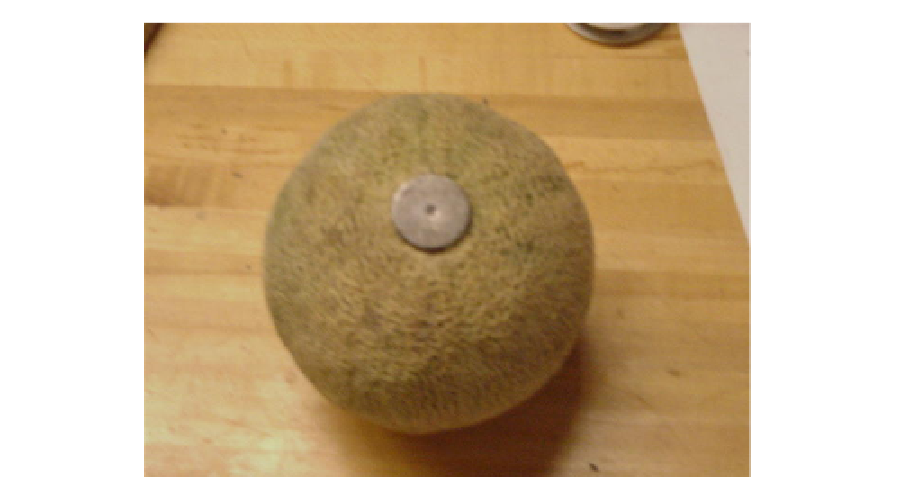Biomedical Engineering Reference
In-Depth Information
Fig. 23. A stiffening metal disk on the melon rind.
It is important that the excitation force contain energy at all the frequencies of interest. That
means that the force imparted by the hammer on the fruit must be a sharp enough pulse in
the time domain. Experimental modal analysis is most commonly done on hard structures
such as vehicles, buildings or metal structures. The surface of the fruit is much softer than
most other structures for which the hammer tip was designed. Hitting the fruit with a
hammer would result in a broad pulse in time domain, which translates into a narrow-
band excitation in the frequency domain. As a result, the impulse spectrum of the
excitation force would not have enough energy to excite vibration modes higher than 200
Hz without its intensity dropping more than 20 dB from its DC magnitude. When that
condition is violated, the coherence of the data is very poor as seen in figure 22. To
overcome this narrow-band excitation problem, a small metal disk (Figure 23) was
attached to the fruit at the point of impact. This resulted in a significantly broader-band
force excitation.
3. Concluding remarks
This chapter has presented a few examples of research that has been done to take advantage
of the advancement in vibration analysis along with applications to characterize the
rheological properties of biomaterials. The literature shows that the rheological properties of
biomaterials are associated to quality indicators, specifically for foods to their texture and
their sensory evaluation, thus many of the applications described in this chapter deal with
food materials. In particular, this chapter has shown examples of application of basic
vibration theories to measure the rheology of liquids as well as viscoelastic semi fluids and
semi solid materials. The static measurement of modulus, finite element computation of the
vibration natural frequencies and mode shapes, and an experimental modal analysis of a
melon fruit are also described.
The authors believe that research on testing of biomaterials using vibration methods may
help achieve:

